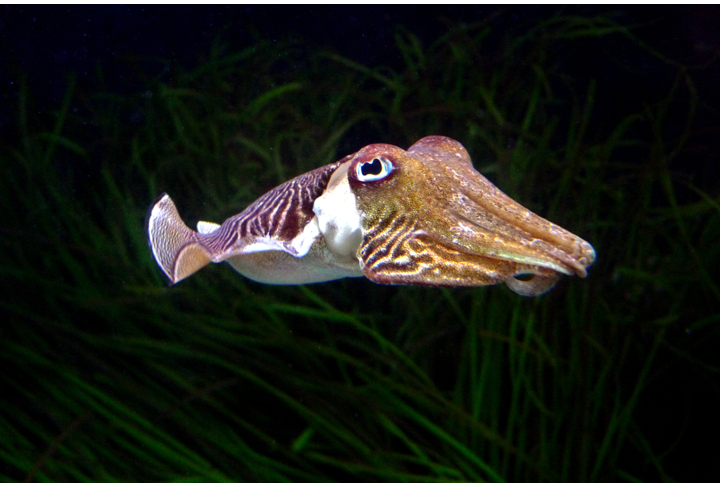The Cuttlefish
May 30, 2023
Cephalopods are invertebrates with one combined body segment and a ring of appendages surrounding the head. Among this unique group of marine organisms is the cuttlefish.
Cuttlefish live in shallow reef communities and use coral formations to hide from their predators. Seals, dolphins, and larger fish make up the cuttlefish’s main adversaries. Cuttlefish occupy a carnivorous niche in the coral reef food web, feeding on all kinds of fish, crabs, and other mollusks.
The interesting anatomy of cephalopods contains many different parts. “Cephalopod” directly translates to “head-foot,” meaning that the portions of the body called the “head” and the “foot” are connected into one single body segment. The cuttlefish hold all of their internal organs in the main cavity above their beak, and the beak is surrounded by eight arms and two tentacles. The arms are shorter and are used mainly for locomotion. The two tentacles, however, are longer and more specialized, serving the additional purposes of feeding and even self-defense.
While cuttlefish only live for an average of two years, they use a very interesting characteristic to survive and thrive throughout their life: the ability to change color. The skin of this mollusk holds up to millions of specialized organs called chromatophores, which are controlled by muscles to expand and contract to expose sacs of pigmented cells and create the appearance of color-changing skin. Cuttlefish use this valuable ability to camouflage and hide from predators as well as to hypnotize their prey. Using chromatophores, cuttlefish can create hypnotic patterns and color-changing sequences on their skin to confuse prey and make them easy to capture.
Mating processes also incorporate the cuttlefish’s ability to utilize chromatophores. These cephalopods reproduce sexually through internal fertilization, with females laying up to a thousand eggs annually. Males often use their color-changing talents to put on a show and impress females for mating, as dazzling chromatophore displays indicate worthy genes to pass on to offspring.
Males have another strange strategy of gaining the favor of female cuttlefish. Smaller males will tuck in their tentacles and make themselves look like females when they cannot compete with a larger, more impressive male. The male-in-disguise will sneak past the larger male and mate with the female in a sly move to pass on their genes.
Cuttlefish are fascinating creatures that fight for survival in the ocean through their many amazing abilities. Even so, species of cuttlefish, such as that of the Australian cuttlefish, are declining mainly due to anthropogenic causes. Learning about these interesting invertebrates shows how diverse and worthy of protecting the ocean’s ecosystems and reefs are.



